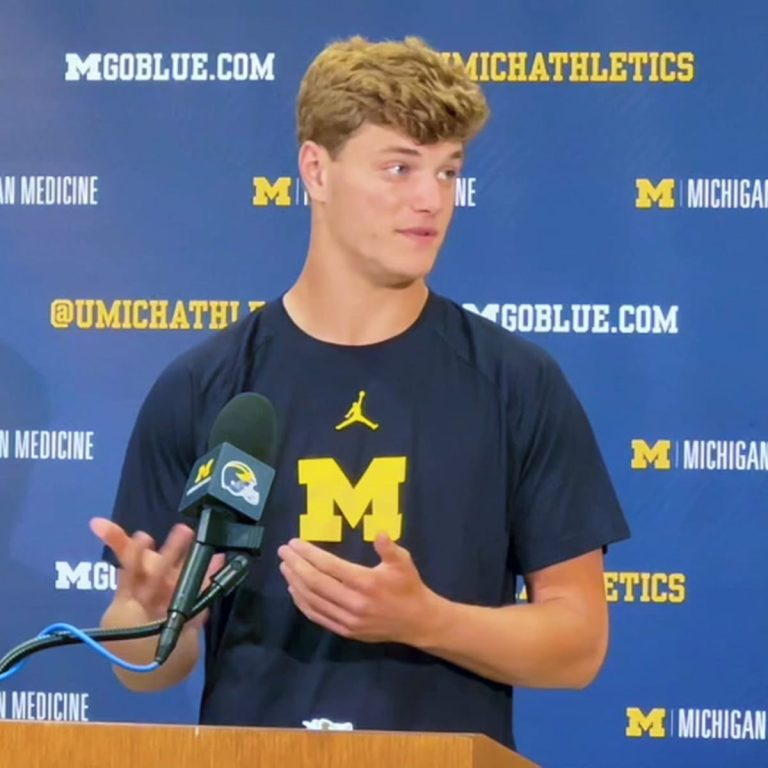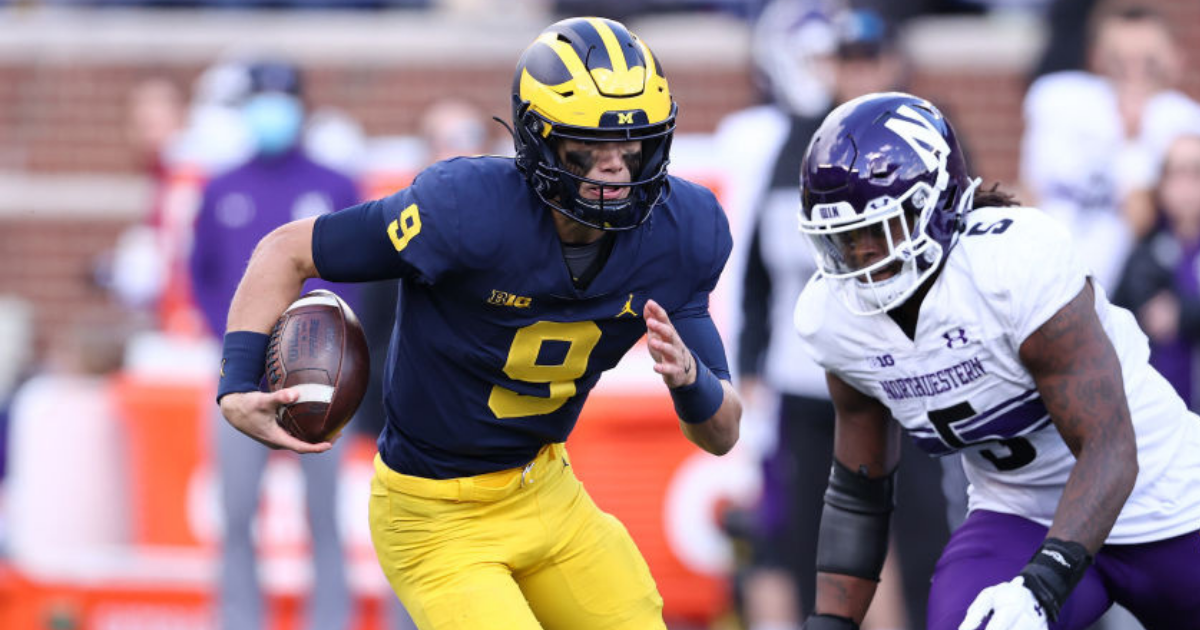JJ McCarthy’s Surgical History: Jj Mccarthy Surgery
/cdn.vox-cdn.com/uploads/chorus_image/image/70904976/1364067982.0.jpg)
JJ McCarthy, the talented quarterback for the University of Michigan Wolverines, has a history of surgical procedures that have impacted his athletic journey. While his athletic career has been marked by success, it has also been punctuated by instances where he has had to overcome physical challenges, requiring surgical interventions.
Surgical Procedures
This section provides details about the known surgical procedures JJ McCarthy has undergone, including the dates, types of surgery, and reasons for the procedures.
- Shoulder Surgery (2021): JJ McCarthy underwent shoulder surgery in the summer of 2021. The specific details regarding the type of surgery and the reason for the procedure are not publicly available. However, it is known that the surgery was related to an injury he sustained during his high school football career. The recovery process from this surgery likely played a role in his development as a quarterback during his freshman year at Michigan.
Potential Surgical Risks for Athletes Like JJ McCarthy

Athletes like JJ McCarthy, who play physically demanding sports like football, are susceptible to various injuries that may require surgical intervention. While surgery can be an effective treatment option, it comes with inherent risks and complications that can impact an athlete’s career and long-term health.
Risks and Complications of Common Surgical Procedures, Jj mccarthy surgery
Understanding the potential risks and complications associated with common surgical procedures is crucial for athletes like JJ McCarthy. These risks can significantly affect an athlete’s recovery time, performance, and overall health.
Shoulder Surgery
Shoulder injuries are prevalent in football, and surgery is often required to address conditions like rotator cuff tears, labral tears, and instability.
- Infection: Any surgery carries the risk of infection, which can delay healing and require further treatment.
- Nerve damage: The nerves surrounding the shoulder can be damaged during surgery, leading to weakness, numbness, or tingling in the arm.
- Stiffness: Scar tissue formation after surgery can limit shoulder range of motion, affecting an athlete’s ability to throw or tackle effectively.
- Re-injury: Despite successful surgery, athletes are susceptible to re-injury, especially if they return to play too early or do not follow proper rehabilitation protocols.
Knee Surgery
Knee injuries are another common occurrence in football, with conditions like ACL tears, meniscus tears, and patellar tendonitis often requiring surgical intervention.
- Arthritis: Repeated knee injuries and surgeries can increase the risk of developing osteoarthritis, a degenerative joint disease that can cause pain, stiffness, and decreased mobility.
- Ligament re-tear: Even after successful ACL reconstruction, athletes are at risk of re-tearing the ligament, especially if they return to play before their knee is fully healed.
- Infection: Infection after knee surgery can delay healing and lead to complications, potentially requiring additional surgery.
- Blood clots: Surgery can increase the risk of developing blood clots in the legs, which can be dangerous if they travel to the lungs.
Foot and Ankle Surgery
Foot and ankle injuries, such as ankle sprains, Achilles tendon ruptures, and stress fractures, can also necessitate surgery.
- Nerve damage: Surgeries in the foot and ankle area can damage nerves, leading to numbness, tingling, or weakness in the foot.
- Limited range of motion: Scar tissue formation after surgery can restrict ankle and foot movement, affecting an athlete’s ability to run, jump, and change direction.
- Non-union: In some cases, the bones may not heal properly after surgery, requiring additional procedures.
- Infection: Infection after foot and ankle surgery can delay healing and potentially lead to complications.
The Role of Surgery in Sports Medicine

Surgery plays a crucial role in treating sports-related injuries, often serving as a last resort when non-surgical options have failed or are deemed insufficient. It aims to restore function, reduce pain, and enhance athletic performance, but it’s not without its limitations.
Surgical Options vs. Non-Surgical Treatments
Surgical and non-surgical treatments offer distinct approaches to managing sports injuries. Understanding their advantages and disadvantages is crucial for informed decision-making.
Non-surgical treatments, often the initial approach, encompass a range of therapies like rest, ice, compression, elevation (RICE), physical therapy, medication, and bracing. These options aim to reduce inflammation, promote healing, and restore function. They are typically preferred for less severe injuries or those that respond well to conservative management.
Surgical interventions are reserved for more complex injuries, those that fail to respond to non-surgical treatments, or when immediate restoration of function is critical. Surgical procedures can address various issues, including ligament reconstruction, tendon repair, cartilage repair, bone fracture fixation, and removal of damaged tissue.
Comparison of Surgical and Non-Surgical Treatments
- Non-Surgical Treatment: Focuses on reducing pain, inflammation, and restoring function through conservative measures like rest, ice, compression, elevation, physical therapy, and medication.
- Surgical Treatment: Involves surgical intervention to address complex injuries, restore function, and potentially enhance athletic performance.
Benefits of Surgical Treatment
- Restoration of Function: Surgery can effectively address severe injuries, restoring lost function and enabling athletes to return to their sport.
- Pain Relief: Surgical procedures can alleviate chronic pain caused by injuries, improving quality of life and allowing athletes to resume activities.
- Improved Athletic Performance: By addressing underlying issues, surgery can enhance athletic performance, enabling athletes to reach their full potential.
Limitations of Surgical Treatment
- Recovery Time: Surgical interventions often require a significant recovery period, potentially delaying an athlete’s return to sport.
- Risk of Complications: Like any surgical procedure, there is a risk of complications, including infection, bleeding, and delayed healing.
- Cost: Surgical treatment can be expensive, involving surgery, hospitalization, and post-operative care.
Hypothetical Treatment Plan for a Football Player
Consider a football player who suffers a significant knee injury, involving a torn anterior cruciate ligament (ACL), medial collateral ligament (MCL), and meniscus tear. A comprehensive treatment plan would involve both surgical and non-surgical approaches.
Initial Management
- RICE Therapy: Immediate application of rest, ice, compression, and elevation to reduce inflammation and pain.
- Non-Steroidal Anti-inflammatory Drugs (NSAIDs): To manage pain and inflammation.
- Crutches and Immobilization: To protect the injured knee and prevent further damage.
Surgical Intervention
- ACL Reconstruction: A surgical procedure to repair the torn ACL using a graft from another part of the body or a donor tendon.
- MCL Repair or Reconstruction: Depending on the severity of the MCL tear, a repair or reconstruction might be necessary.
- Meniscus Repair or Removal: If the meniscus tear is repairable, it will be repaired. Otherwise, a portion of the meniscus might be removed.
Post-Operative Rehabilitation
- Physical Therapy: Intensive physical therapy program focusing on regaining range of motion, strength, balance, and proprioception.
- Bracing: Use of a brace to provide support and stability during the early stages of recovery.
- Gradual Return to Activity: A progressive return to sport, starting with low-impact activities and gradually increasing intensity and complexity.
Jj mccarthy surgery – Yo, so JJ McCarthy had this surgery, right? I heard it was on his knee, maybe a torn meniscus? It’s a rough one, but check this out for tips on torn meniscus recovery if you ever need it.
Anyway, I’m hoping JJ’s back on the field soon, dude’s a beast!
Yo, JJ McCarthy’s surgery was a big deal, right? He’s got a tough road ahead of him, but with a torn meniscus, it’s all about recovery time. Check out this article torn meniscus recovery time to see how long it takes for a full recovery.
Hope JJ’s back on the field soon, man!
